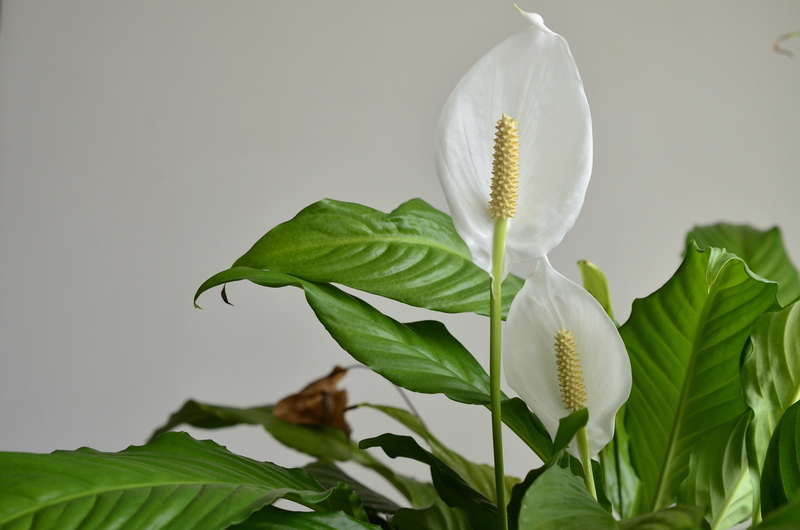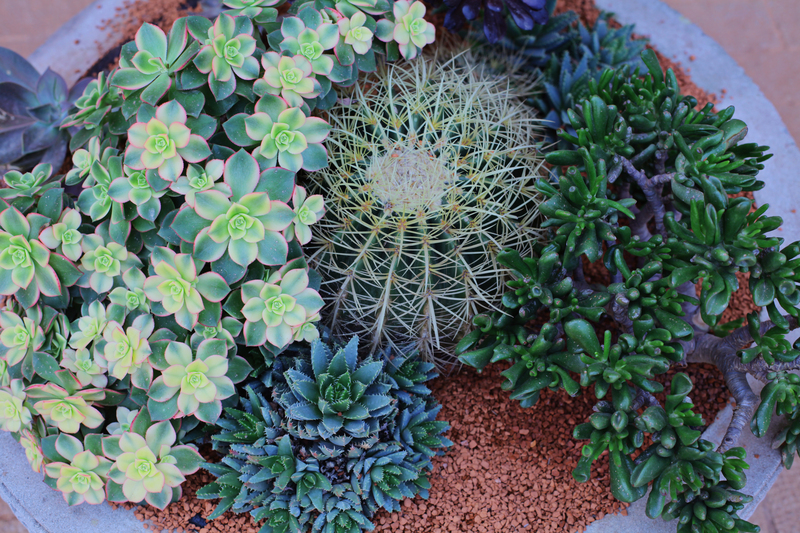Optimal Shape Designs for Hassle-Free Hedge Care
Posted on 13/08/2025
Optimal Shape Designs for Hassle-Free Hedge Care
Caring for hedges can be an enjoyable and rewarding part of gardening. However, maintaining beautiful and healthy hedges doesn't have to be a tiresome chore. One of the secrets to easy hedge maintenance is choosing the perfect hedge shape design from the start. In this comprehensive guide, you'll discover the most efficient hedge shapes and optimal hedge designs that will help you create a stunning landscape without the hassle.
Why Hedge Shape Matters for Low-Maintenance Gardening
The shape of your hedges greatly influences the effort needed to care for them. An optimal hedge design:
- Controls growth and prevents overgrowth
- Reduces the frequency of trimming
- Encourages strong, healthy plants
- Prevents common issues like bare spots and dieback
- Enhances the visual appeal of your landscape
By choosing the right shapes for your hedges, you won't just save time, you'll also promote better health for your plants. Let's look at the most recommended hedge shapes for easy care and their advantages.

The Best Hedge Shape Designs for Easy Maintenance
1. The Classic Trapezoid: The Gold Standard for Hassle-Free Hedge Care
The trapezoid (or A-shape) hedge is widely recognized by horticulturists and landscape designers as the top choice for low-maintenance hedging. With a broad base and narrower top, its form allows light to reach lower branches, leading to fuller and healthier foliage throughout.
- Easy to trim and shape
- Encourages dense, uniform growth
- Prevents the base from becoming leggy or bare
- Optimal for privacy screens and borders
- Handles snowfall and rain better, reducing the risk of branch breakage
Tip: When shaping your hedge into a trapezoid, aim for a 10% slope on the sides. For every 1 meter of vertical growth, make the bottom at least 10 cm wider than the top.
2. Rounded or Domed Hedges: Versatile and Attractive Hedge Design
If you prefer softer lines in your garden, rounded or domed hedges offer a practical solution. Rounded tops enable water to run off easily, preventing rot and minimizing disease risk.
- Reduces debris and water buildup on the hedge
- Softens hedge lines, making them blend with natural landscaping
- Ideal for ornamental and flowering hedges
- Requires less precision but regular light trims
Best for: Flowering shrubs, mixed borders, garden accents
3. The Flat-Top Hedge: Modern Appeal with a Little More Upkeep
Flat-topped hedges have a clean, contemporary look and can make strong statements in a landscape. However, they require slightly more effort because flat surfaces tend to collect snow and debris, and may lose their sharp shape quickly.
- Great for formal gardens and boundary lines
- Makes an excellent backdrop for mixed borders
- Requires regular trimming to maintain a crisp, level surface
- Choose slow-growing species for easier maintenance
Maintenance Tip: Equip yourself with a long spirit level or string guide to achieve perfectly straight lines.
4. Natural or Informal Hedges: Minimal Intervention for Careful Plant Selection
For those who desire the absolute minimum maintenance, informal hedges are the answer. By selecting plants that grow in a naturally bushy form, you can let hedges develop their shape organically, only trimming stray stems or keeping them contained as needed.
- Blends seamlessly with wildlife-friendly or cottage gardens
- Minimal trimming required
- Supports biodiversity by producing flowers, berries, and shelter
- Best for rural properties, cottage gardens, or naturalistic screens
5. Wavy or Curved Hedges: Creative Flair With Strategic Pruning
Wavy-shaped hedges add motion and character to landscapes. While not entirely maintenance-free, they can be surprisingly manageable if you use slow-growing plants and keep the curves broad rather than tight.
- Adds visual interest and softens straight lines in the garden
- Can be used to accentuate garden paths or highlight features
- Requires thoughtful early shaping, but easy maintenance after establishment
How to Choose the Ideal Shape for Your Hedge
Selecting the best hedge shape design for minimal care depends on several factors:
- Purpose: Are you planting hedges for privacy, windbreaks, decoration, or boundary marking?
- Plant Species: Some shrubs respond better to shaping than others. Check their natural form and growth rate.
- Garden Style: Match shape to style - formal gardens benefit from geometric forms, while informal gardens suit softer shapes.
- Maintenance Willingness: If you despise frequent pruning, opt for rounded or informal forms with slow-growing plants.
Remember: The optimal hedge design for your garden is the one that balances your desired look with the lowest ongoing effort.
Key Principles for Hassle-Free Hedge Trimming
Regardless of the shape, following these proven principles will make your hedge care even more effortless:
- Always trim so the base is wider than the top: Prevents shading that causes thinning and leggy growth.
- Begin shaping early: Start gentle formative pruning when plants are young for best results.
- Trim little and often: Small, regular trims are less stressful for plants and easier for you.
- Use sharp, well-maintained tools: Clean cuts heal quickly and reduce disease risk.
- Choose the right time to trim: Most hedges benefit from pruning after flowering or during dormancy, depending on species.
Top Plants for Easy-Shaped, Low-Maintenance Hedges
The secret to truly hassle-free hedge care lies not just in shape, but plant selection. Some of the best species for easy-to-shape hedges include:
- Boxwood (Buxus): Excellent for sharp lines, domes, and formal shapes
- Yew (Taxus): Dense, slow-growing, and responsive to pruning
- Privet (Ligustrum): Tough, adaptable, and easy shaping
- Holly (Ilex): Attractive foliage and berries, responds well to regular shaping
- Photinia: Vibrant color, tolerates domed and informal shapes
- Hawthorn (Crataegus): Wildlife-friendly and good for informal hedges
- Escallonia: Flowering, tough, and responds well to light shaping
More important than the species, however, is matching the plant to your local climate and soil. Healthy, well-suited foundational plants make optimal hedge design possible.
Common Hedge Shape Mistakes and How to Avoid Them
Avoiding common errors will save countless hours in the garden. Here are the most frequent mistakes in hedge shape design and how to avoid them:
- Creating inverted shapes (wider at the top): Starves lower branches of light, causing leaf drop and bare spots.
- Neglecting early formative pruning: Leads to awkward, unbalanced hedges that are hard to correct.
- Wrong species for the shape: Fast-growing, loose shrubs can't hold geometric forms without constant work.
- Allowing hedges to get too tall, too fast: Makes trimming dangerous and unwieldy; keep at manageable heights.
- Trimming during active growth or nesting season: Damages plants or disrupts wildlife - always check the best time for each species.

Maintaining the Best Hedge Shape Over Time
Annual and Seasonal Tasks
For truly easy-care living fences, a little timely effort reaps big rewards. Here's a suggested annual schedule for maintaining optimal hedge design:
- Spring: Light formative pruning on evergreen and deciduous hedges
- Early Summer: Main shaping of formal hedges before birds nest or heat stress hits
- Late Summer/Early Autumn: Final trim to keep shapes crisp before winter
- Winter: Structural cuts and hard pruning if needed, when plants are dormant
Pro tip: Bold hedges are best trimmed in cloudy or cool weather to reduce stress and browning on cut leaves.
Tools for Effortless Hedge Trimming
Having the right tools on hand makes maintenance almost effortless. Consider investing in:
- Sharp, long-bladed shears or electric trimmer for straight edges
- Long-handled loppers for thicker stems
- Spirit level or string lines for formal shapes
- Sturdy step ladder for taller hedges (ensure safety at all times!)
Conclusion: Designing Hedges for Minimal Care and Maximum Beauty
By understanding and applying optimal hedge shapes--like the classic trapezoid, rounded dome, or carefree informal designs--you pave the way for beautiful, manageable hedges that enhance your garden without overwhelming your weekends. The key to hassle-free hedge care is a combination of smart plant selection, thoughtful shaping, and regular light maintenance.
Put these tips for optimal hedge shape design into practice and enjoy hedges that are not only easy to care for, but also a lasting source of pride in your landscape. For even better results, pair these strategies with eco-friendly practices and encourage local biodiversity. You'll reap the dual rewards of less work and more beauty--season after season.
Frequently Asked Questions about Optimal Hedge Design
- What is the easiest hedge shape for beginners?
The trapezoid or slight dome is the easiest to maintain and most forgiving for new gardeners. - How often should I trim my hedge?
Light trims 2-3 times per year generally suffice for slow-growing species and optimal shapes. - Can all hedge plants be shaped the same way?
No, always check the natural growth pattern--some tolerate formal shapes better than others. - Are rounded hedges better for heavy snowfall areas?
Yes, rounded or domed tops shed snow more efficiently and reduce branch breakage.
For more tips and expert advice on optimal hedge shape designs, best hedge plants, and sustainable gardening, be sure to browse the rest of our gardening resources!

